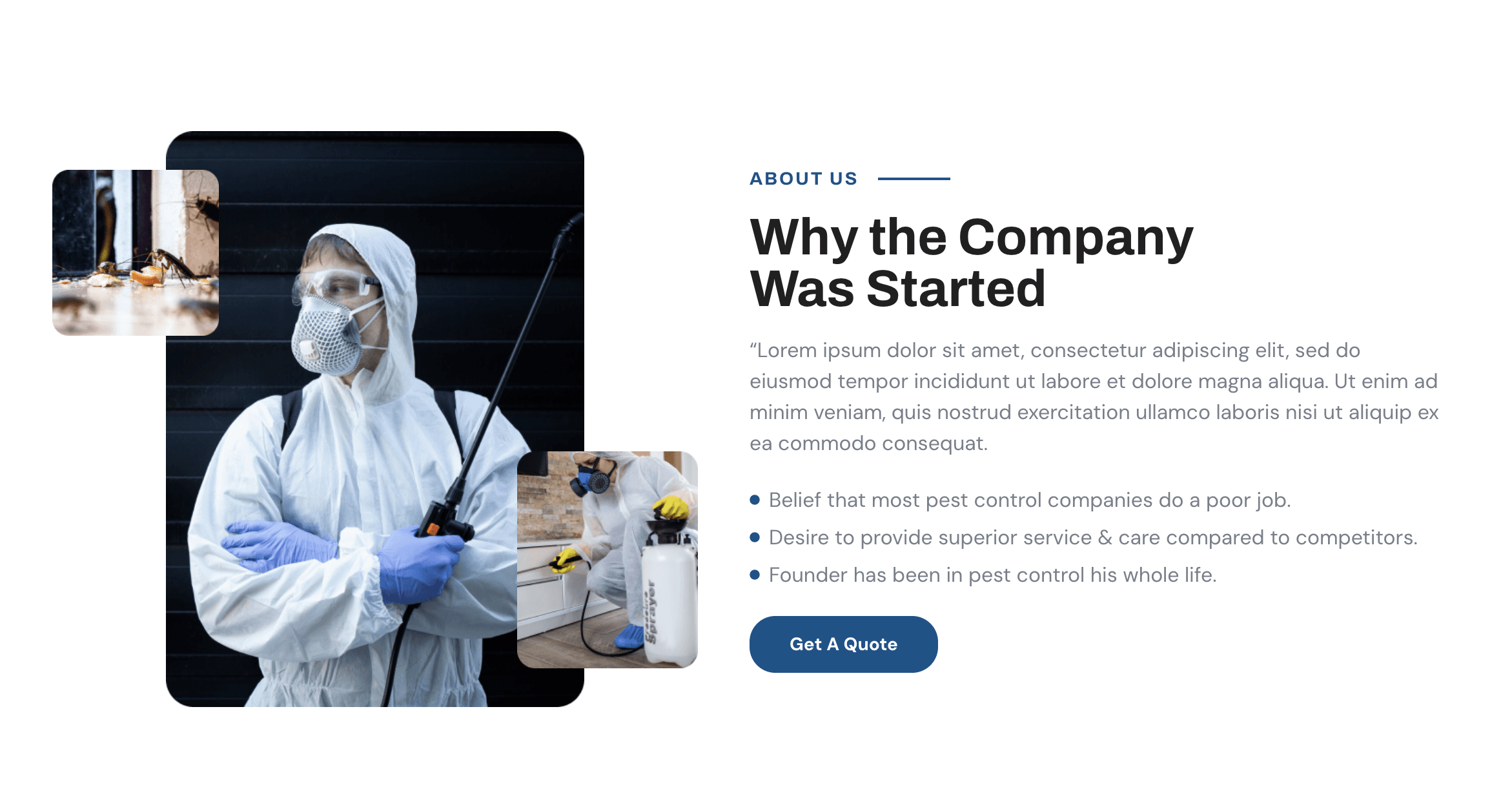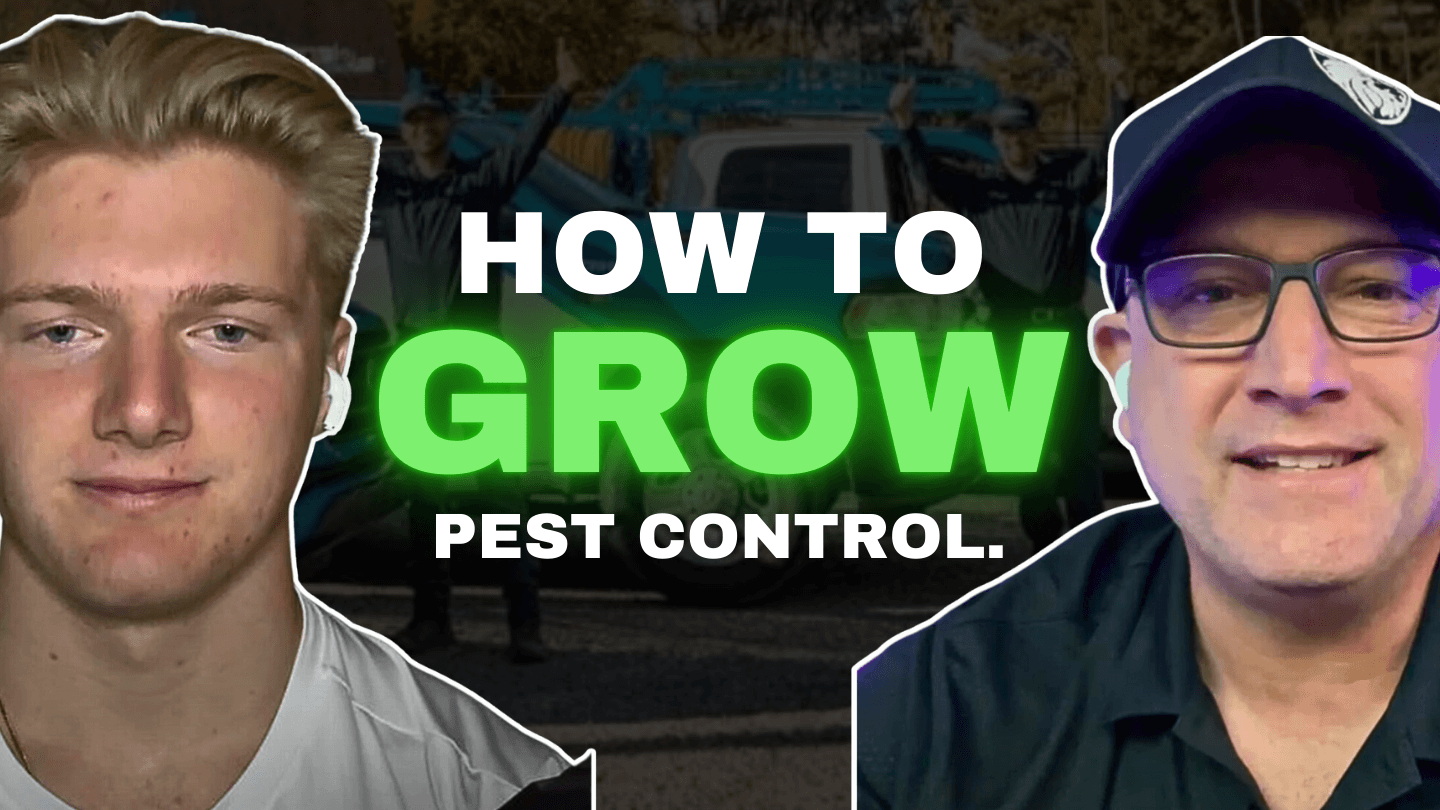Informational
Pest Control Website: How To Make a Website For Pest Control
Danny Leibrandt
May 6, 2024
Your website is often the first interaction potential customers have with your pest control business. It's your digital storefront, and if it's not designed correctly, you could be missing out on valuable leads. A well-built, user-friendly website can help you capture more visitors, convert them into leads, and ultimately grow your pest control business. In this guide, I’ll walk you through how to create an effective pest control website that drives results.
Why Your Website Matters for Pest Control
In today’s digital age, your website is a critical tool for lead generation and customer engagement. Most people searching for pest control services will begin their search online, and if your website isn’t optimized for user experience and search engines, you could be missing out on business. A great pest control website does three things:
Attracts traffic through SEO and marketing efforts.
Engages visitors with relevant information and easy navigation.
Converts visitors into leads through clear calls to action.
Now, let’s dive into the key components of building an effective pest control website.
1. Define Your Goals
Before you even begin building your website, you need to define its purpose. What do you want your website to accomplish? For a pest control business, your goals will likely be:
Generating leads by encouraging visitors to fill out a contact form or call you.
Providing helpful information about pest control services and educating customers.
Establishing trust with potential clients through testimonials and reviews.
Having clear goals will help guide your design choices and ensure your website serves its intended purpose.
2. Choose a User-Friendly Design
When it comes to web design, simplicity and ease of use are key. A clean, professional layout that makes it easy for users to navigate is crucial for conversion. Here are a few tips for designing a user-friendly pest control website:
Clear Navigation: Your menu should be simple and intuitive. Use clear labels like "Home," "Services," "About Us," "Contact," and "Blog" to guide visitors to the right pages.
Mobile-First Design: Most of your customers will be searching for pest control services on their phones, so your website needs to be mobile-friendly. Make sure it looks great and functions well on mobile devices.
Fast Loading Times: A slow website can cause visitors to leave before they even see what you have to offer. Ensure your site loads quickly on all devices.
3. Optimize for SEO
Search engine optimization (SEO) is critical for getting your pest control website to rank higher in Google search results. If your website isn’t optimized for SEO, potential customers might not be able to find you. Here’s how to optimize your website for SEO:
Keyword Research: Target relevant, location-based keywords like “pest control in [city]” and “exterminator near me.” Include these keywords throughout your content, but don’t overdo it.
On-Page SEO: Each page on your site should have a unique meta title, meta description, and header tags (H1, H2, etc.) optimized for your target keywords. This helps search engines understand what your page is about.
Internal Linking: Use internal links to connect relevant pages on your website. For example, link blog posts to your service pages and vice versa to help Google crawl your site effectively.
Local SEO: Include your business’s name, address, and phone number (NAP) consistently across your website and other directories like Google Business Profile.
4. Create Service Pages for Each Pest Control Service
One of the biggest mistakes pest control websites make is trying to cram all their services onto one page. Instead, you should have a dedicated service page for each pest you handle. For example:
Termite Control
Rodent Removal
Bed Bug Extermination
Ant Control
Cockroach Control
Each of these pages should describe the specific pest control service, include keywords relevant to that pest, and have a clear call to action (e.g., “Contact us for a free inspection”).
5. Set Up Location Service Pages for Each City You Serve
If your pest control company serves multiple cities or areas, it's crucial to set up location-specific service pages for each city. This strategy helps you rank higher in local searches for each service area, which boosts your chances of being found by customers in that region. For example, you might create separate pages like:
Pest Control in [City A]
Exterminator Services in [City B]
Termite Treatment in [City C]
Each page should:
Focus on the specific city with local keywords.
Highlight services offered in that location.
Include customer reviews from that area, if possible.
Feature a clear call to action tailored to that city.
These location pages ensure your business appears in search results for multiple areas, helping you capture more local leads.
6. Use Clear Calls to Action (CTAs)
A good website doesn’t just provide information—it encourages visitors to take action. Whether that’s filling out a contact form, requesting a quote, or calling your business, you need to make it easy for visitors to contact you. Place clear, compelling calls to action throughout your website. Some examples include:
“Call Now for a Free Inspection”
“Schedule Your Pest Control Service Today”
“Get a Free Quote”
CTAs should be placed at the top of the page, in the middle of your content, and at the bottom, so visitors always know how to take the next step.
7. Build Trust with Testimonials and Reviews
Pest control is a trust-based service, and potential customers want to know that your company is reliable. Including customer testimonials, case studies, and reviews can build credibility and trust with your audience. Consider adding:
Video Testimonials: Video testimonials from satisfied customers can be very persuasive.
Before and After Photos: Show the difference your services make by including before-and-after photos of pest problems you’ve solved.
Accreditations and Certifications: Display any relevant certifications (e.g., licensed exterminators, eco-friendly pest control solutions) prominently on your site.
8. Create a Blog to Educate and Drive Traffic
Blogging is a great way to provide valuable information to your audience while also improving your SEO. Write about common pest issues, prevention tips, and seasonal pest control advice. For example:
“How to Prevent Termites During Spring”
“Top Signs You Have a Bed Bug Infestation”
“DIY Tips for Rodent Control”
Each blog post should include relevant keywords and link back to your service pages to keep visitors engaged and boost your SEO efforts.
9. Make It Easy to Contact You
Your contact page should be one of the most accessible and straightforward parts of your website. Include multiple ways for customers to get in touch:
Contact Forms: Simple forms that ask for basic information (name, phone number, email, and service requested).
Click-to-Call Buttons: On mobile, include click-to-call buttons that instantly dial your business.
Live Chat: If possible, offer live chat services so customers can get quick answers to their questions.
10. Track Your Website’s Performance
Once your website is live, it’s essential to track how well it’s performing. Use tools like Google Analytics and Google Search Console to monitor traffic, bounce rates, and conversions. This data will help you identify areas for improvement and optimize your site over time.
Conclusion
Building a website for your pest control business isn’t just about having an online presence—it’s about creating a platform that attracts, engages, and converts visitors into customers. By focusing on user experience, SEO, creating service and location pages, and clear calls to action, you can create a pest control website that works as a powerful lead generation tool. Ready to build a website that grows your business? Follow these steps, and you’ll be well on your way to a more successful online presence.


